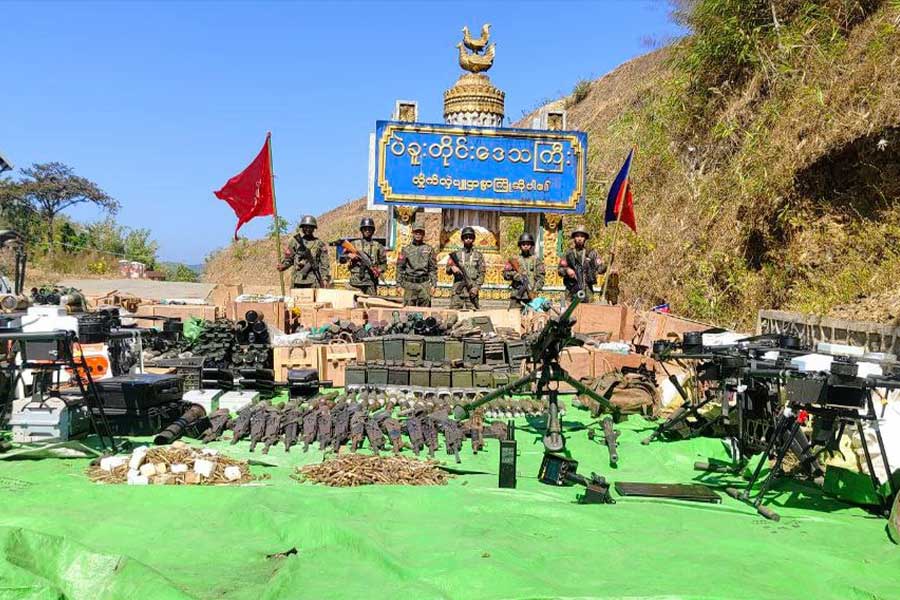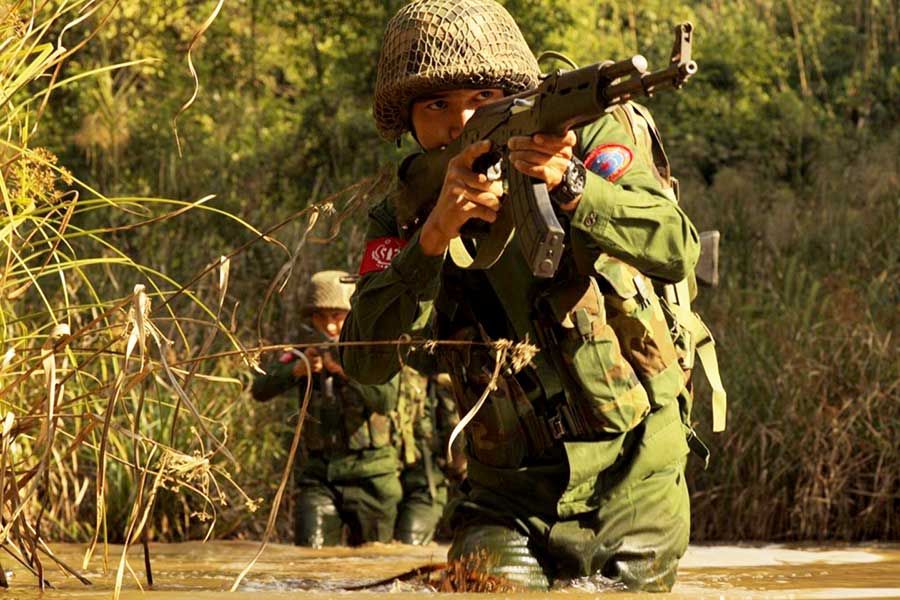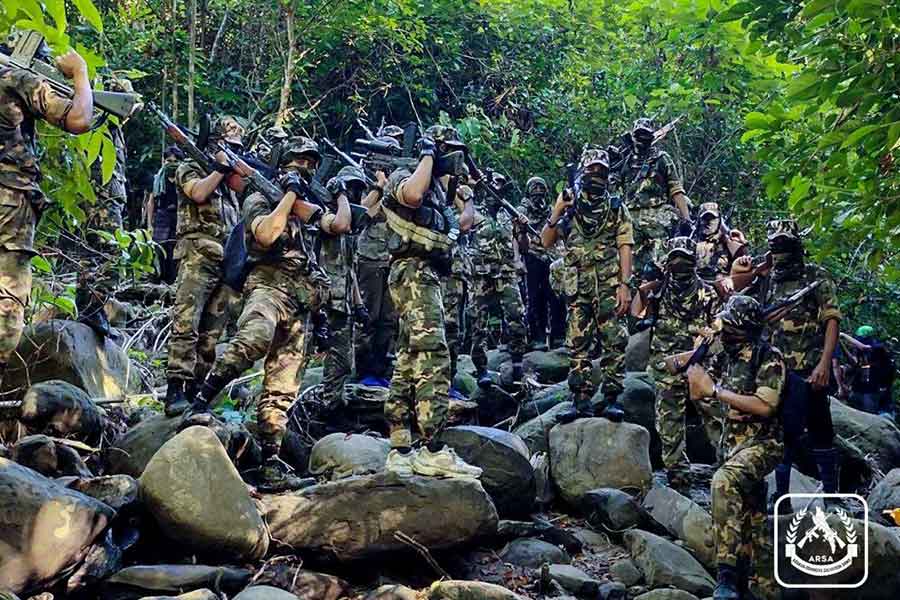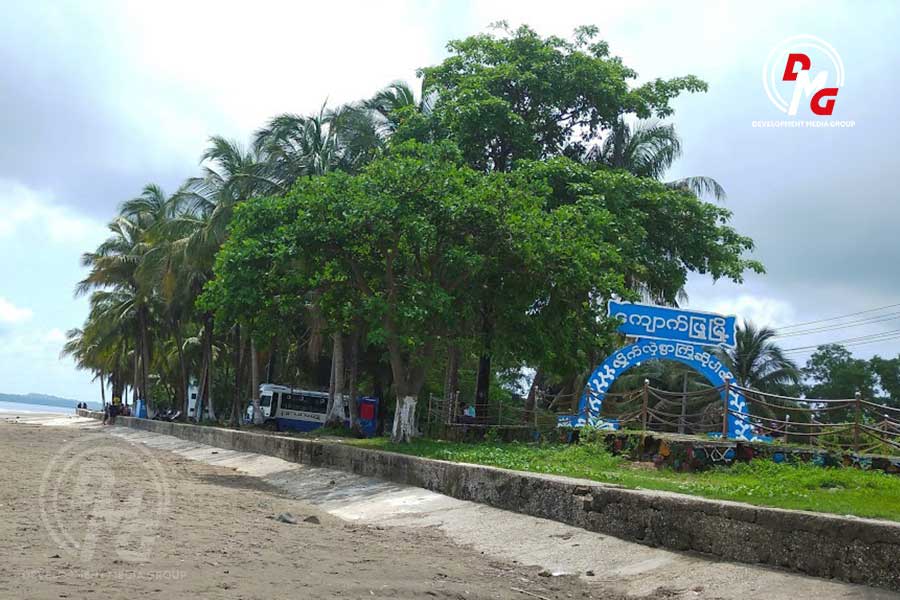Internet ban creates negative impact on flooded areas
The Myanmar government cut off mobile data service in Arakan State’s eight townships without letting local residents know in advance. So, people from affected areas have no access to receive and distribute information.
19 Jul 2019
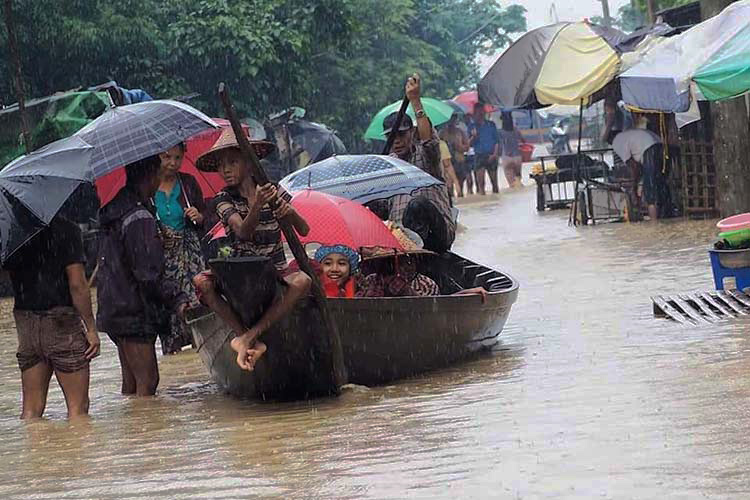
Phadu Tun Aung | DMG
Heavy rain and rising water levels since 10 July has flooded in Mrauk-U, Kyauktaw and Minbya Townships in Arakan State. Initially, people from other areas did not know about the flooding in these areas.
The government has blocked Internet access in Buthidaung, Maungdaw, Rathedaung, Ponnagyun, Kyauktaw, Mrauk-U, Minbya and Myebon Townships in Arakan State, and Paletwa Township in Chin State, where ongoing conflicts are occurring between the Tatmadaw and the Arakan Army since 21 June. So, information about the floods could not be posted on social media networks and people could not learn about the flooding in these areas
Subsequently, the information about the flooding in affected areas has been gradually circulating by relief organizations for IDPs and local members of parliament. The worst situation started on 13 July. On that day, Tin Nyo IDP camp where over 3000 refugees in Mrauk-U Township are taking shelter was inundated with water and the war refugee-cum- flood victims have to take refuge in the monastery.
Moreover, Myadasaung and Sinbawkaing IDP camps have been affected by the flooding. Meanwhile, other villages have also been flooded in the region, the number of flood victims has been over 100,000, regional lawmakers and local CBOs leaders said.
In Kyauktaw Township, about 40 villages were swamped and a 16-year-old boy was killed after he was washed away by water currents. In Minbya Township, villages near the Lay Myo River were the most affected areas and even all wards in the town area were flooded.
Currently, the number of flood victims is not exactly known, but the number of evacuated people is just over 9500, according to the figures released by the Department of Disaster Management in Arakan State in July 16.
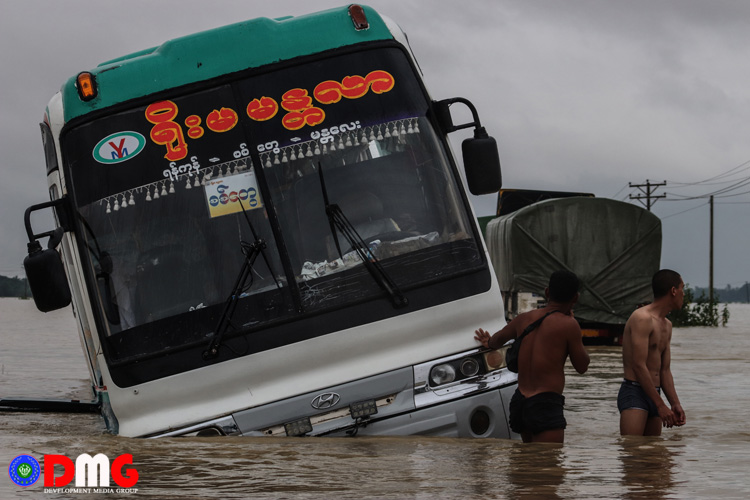
Did the government warn flood hazard?
The Myanmar government cut off mobile data service in Arakan State’s eight townships without letting local residents know in advance. So, people from affected areas have no access to receive and distribute information.
The government did not warn local residents in beforehand about the risk of flooding, MPs and locals said.
“From my point of view, (the government) failed to provide warnings about weather conditions to the public. Information for weather forecasts from the Department of Meteorology and Hydrology can be received if we have Internet access or radio. Most people do not listen to the radio now. So, people could not get information about the weather via radio services. So, they couldn’t prepare for the risk of natural disasters, and the devastation is really big,” Ko Kyaw Hla Myint, an activist for social affairs, told the DMG.
For providing information for public, the government uses the Internet, radio, TV and newspapers. The government uses these four forms of media for information about weather and critical conditions on the Kaladan and Lay Myo rivers where river water reached dangerous levels.
But, most of the flood affected areas are rural areas and most people do not have access to radio, TV and newspaper, and since there’s no Internet rural folks have zero access to news the government broadcasts.
People have no access to news reports in advance, in spite of advances in technology and cutting-edge channels of communication. So, people in remote areas have to deal with the consequences and endure adverse weather conditions and possibly face tremendous losses,” U Tun Tha Sein, Arakan State MP from Mrauk-U Township, told the DMG.
If the government could warn people about floods in advance, the damage would not have been so great. Ko Kyaw Hla Myint pointed that the government would have warned people about the risk of flooding through village administrative authorities.
U Win Myint, spokesperson of the Arakan State cabinet, said: “Weather forecasts are broadcasted via television and subsequently distributed to village administrators through township administrators. The surge of water levels in the Lay Myo River has also been aired on TV.”
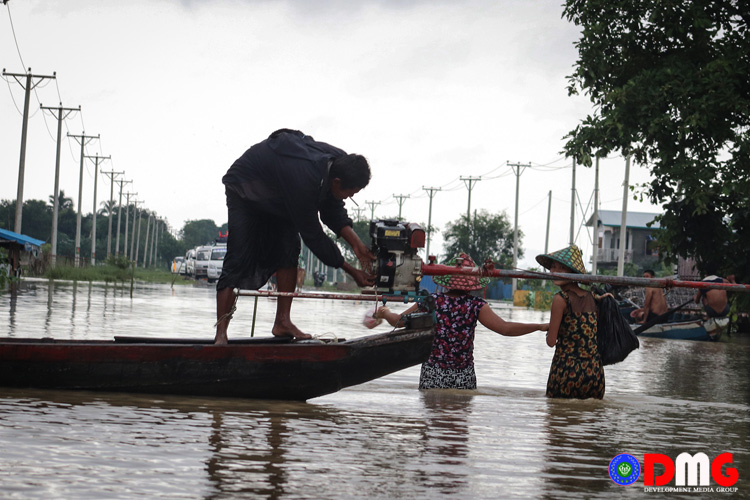
Flood victims have not yet been provided relief aid
Although it has been seven days since flooding has drowned the region, the government and CSOs cannot start providing relief aid for flood victims. The social activist Ko Kyaw Hla Myint from Kyauktaw town said that departmental officials from the government have not yet started opening relief camps for flood victims and visited flood affected areas to assess the situation.
Ko Kyaw Hla Myint has arrived at Kun Ohn Chaung village in Kyauktaw Township located near Yangon-Sittwe highway on 14 July. The village is home to about 2000 people from over 200 houses. All the people from the village have been affected by the flash floods. The water level reached up to 12 feet in the low-lying areas of the village and some houses are totally submerged.
U Ba Thar, owner of a rice mill in the village, has experienced the impact of the flooding. Over 2000 baskets of paddy (each basket is 46 pounds) were swamped with water. Other villagers’ paddies were submerged or their paddy fields were destroyed and some villagers lost their cattle; or it died or went missing. Some villagers currently stay on roads or on the bank of the villages’ ponds, where the ground is higher than in their village. They build temporary shelter with tarps.
“Some people have to sleep on the road. People who have tall homes enough can stay in them but they may face inconveniences,” Ko Kyaw Hla Myint told the DMG via phone.
Flooding occurred in Ponna Ywar and Phaya Paung villages as well where local people are dealing with setbacks.
The flood victims have not been provided relief aid so far. So, MPs and local residents blamed the Internet cut-off in the region. They said that CSOs could not help them quickly and could not receive required information in a timely manner.
“Previously, donors could quickly assess a disaster situation and know exactly what is needed to fix problems based on information that’s conveyed to relief workers. Now, since the flooding has affected areas for three days but both the government and CSOs could not begin supplying relief aid yet, this is because of the Internet black out,” U Tun Tha Sein said.
The regional government has already instructed respective townships to furnish relief aid for flood-affected victims. However, relief supplies have not made it to their destinations yet because of poor transportation, U Win Myint, spokesperson of the Arakan State government, told the DMG.
U Khaing Kaung San, director of Wan Lark Foundation, said that he is not satisfied with what the government is doing for the refugees.
“We haven’t seen any help (from the government) so far. We are not content with the situation of the refugees. They have put up with a lot of problems: first they flee their homes because of fighting, then have receive a paltry amount of assistance from the government. Now, they have to put up with flooding and, the assistance from the government has been less than zero,” U Khaing Kaung San said.
He added that he heard the regional government has a separate budget for natural disaster and suggested that the government should spend that budget for the flood victims.
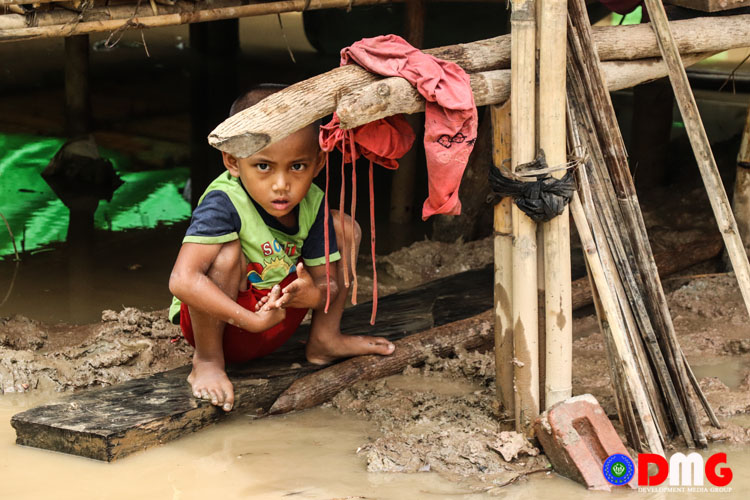
But, spokesperson of the regional government U Win Myint said that the regional government does not have a separate budget to provide aid for the flood victims and the government will use the necessary amount for the flood victims.
“We could not limit the amount to use for the refugees. We will have to spend the amount that’s necessary for improving the conditions of the affected areas,” he said.
Does the government prepare to prevent from the flood hazard?
Meteorologist Dr Tun Lwin previously warned of floods during the months of July and August and the end of September will experience heavy rain because of monsoons that bring strong wind and serious rain.
In 2015 Arakan State experienced severe flooding that affected many people. Minbya, Mrauk-U, Kyauktaw and Ponnagyun Townships are prone to flooding, yet the government did not prepare for the flooding, U Khaing Kaung San said.
“The government did not have a disaster preparedness plan in place and did not provide public awareness on how to respond emergencies, also the government didn’t issue warnings on the dangers of floods. So, I’d like to say it is the fault of the government,” he said.
However, U Win Myint responded that the government already had emergency preparedness plans since it knew the risk of floods in the region. The plans are carried out by instructing to village administrators through township administrators.
The Internet cut-off cause troubles for people as well as challenges for the government to receive information. They have to rely on phones to know the situation in flood affected areas. If they could not get access by phone, they have to send their people to assess the situation in the affected areas, U Ye Min Oo, staff officer of the Department of Disaster Management in Arakan State, told the DMG.
“We never stop our relief aid in spite of not have Internet access. We will try our best using any means we can get so that we could deliver aid to the affected areas,” he said.
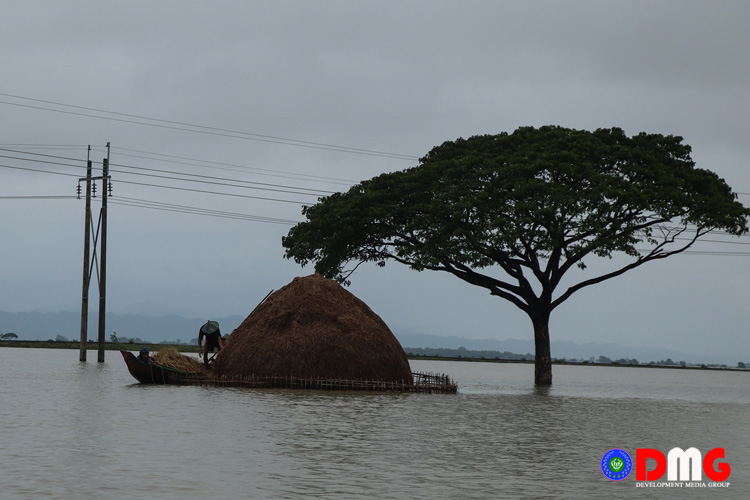
In Arakan State, more than 50,000 people are now living as IDPs following the armed conflicts which started in early December 2018. And, they are facing appalling hardships; they do not have enough food, they lack health services, live in squalor and students cannot go to school.
Now war refugees have become victims of vicious natural elements without receiving the proper aid to make their lives at least, barely sustainable. The Internet black out only makes matters worse and there seems to be no end to this insane situation. At this point in time if the Internet were restored it would greatly alleviate many of the problems the victims of flooding and war have had to endure. It would be the first step in the right direction.




